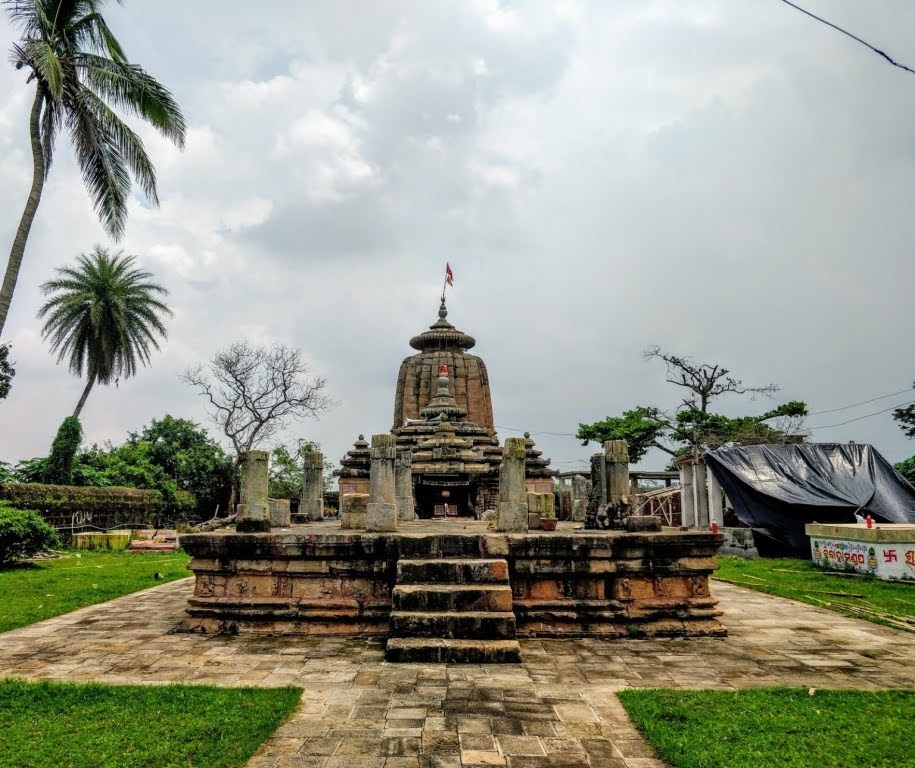Kalarahanga Sri Jalesvara Temple, Odisha

Address
Kalarahanga Sri Jalesvara Temple, Kalarahanga, Bhubaneswar, Odisha 751024
Diety
Jaleshvara
Introduction
The Jalesvara Temple, located in Kalarahanga Village on the northern outskirts of Bhubaneswar, Odisha, India, is dedicated to Lord Shiva and holds historical and religious significance. The Jalesvara Temple is situated approximately 3 kilometers from Patia, on the southern outskirts of Kalarahanga Village. It lies on the route from Bhubaneswar to the Nandankanan Zoological Park.
Puranic Significance
- Historical Significance: The temple is believed to have been constructed in the 12th century CE during the reign of the Somavamsi dynasty. According to local folklore, it was built by Somavamsi King Padma Keshari. The temple is a protected monument and is maintained by the Archaeological Survey of India, Bhubaneswar Circle.
- Legend: The temple’s origin is associated with a legend. The king of Chudanga Gada, a devotee of Lord Lingaraja, faced challenges visiting Lingaraja Temple during the rainy season due to heavy floods. In response to his prayers, Lord Lingaraja appeared in his dream and advised him to construct a temple in the center of a nearby lotus pond, where the Lord resided. Following this divine guidance, the king built the Jalesvara Temple on the western embankment of the Jalesvara pond. This act led to the place being named Kalarahanga.
- Orientation: The Jalesvara Temple is oriented towards the east, as is customary in many Hindu temples.
- Architectural Features: The temple follows traditional Odishan temple architecture, featuring a rekha vimana (main sanctum), an antarala (vestibule), a pidha jagamohana (assembly hall), and a detached nata mandapa (dance hall). The temple has a pancharatha plan and panchanga bada in elevation. The sukanasa (tower above the vestibule) is adorned with decorative motifs.
- Doorway Decorations: The temple’s doorjambs are intricately decorated with four vertical bands of ornamentation. Dvarapalas (door guardians) and river goddesses Ganga and Yamuna can be seen at the base of the doorjambs on either side. The lalatabimba (lintel) houses images of Saraswathi and Ganesha within a pidha mundi niche. The architrave above the doorjambs features depictions of the Navagrahas (nine celestial deities).
- Presiding Deity: The sanctum enshrines the presiding deity, Jalesvara, represented in the form of a Shiva Linga within a circular yonipitha (pedestal).
- Raha Niches: The temple premises also feature raha niches housing images of deities, including Ganesha in the south, Kartikeya in the east, and Mahisasuramardini in the north.
The Jalesvara Temple not only exemplifies the architectural heritage of Odisha but also stands as a testament to the religious and cultural significance of Lord Shiva in the region.
Festivals
Shiva Vivaha, Shivarathri, Janmashtami are the festivals celebrated here.
Century/Period/Age
12th century CE
Managed By
Archaeological Survey of India (ASI)- Bhubaneshwar
Nearest Bus Station
Kalarahanga
Nearest Railway Station
Patia station (PTAB), Bhubaneshwar
Nearest Airport
Bhubaneshwar






